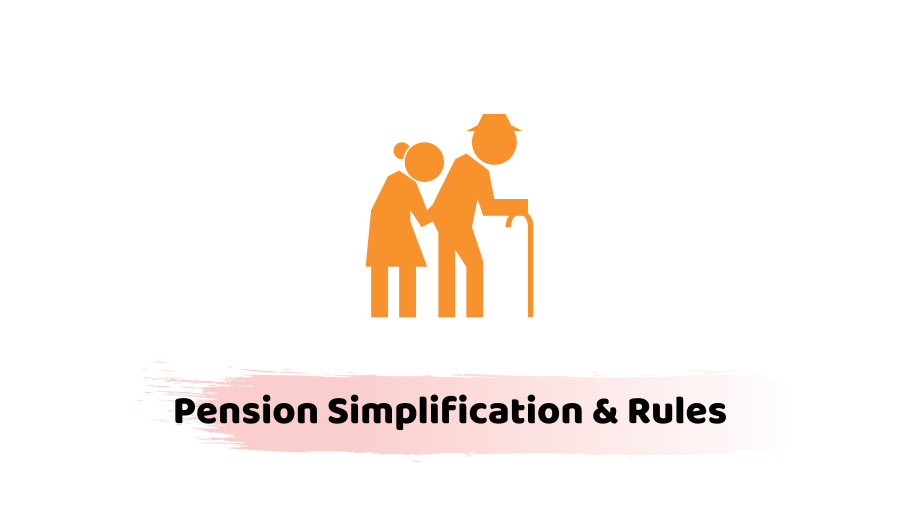On the 6th April 2006 (A Day) new rules were introduced which were a major overhaul of the pension system, designed to simplify the pension regime and iron out differences between different types of pension arrangements. As always, new rules are not always that simple – and they are altered on an almost annual basis.
Retirement Age
The minimum retirement age for taking pension benefits is 55 from 6 April 2010. You can of course carry on working to any age or start to take your pension benefits once you reach the minimum retirement age and continue to work at the same time.
Annual Allowance
The main points are:
- The maximum level of pension contributions that can qualify for tax relief in one year is limited to 100% of your earned income capped at £50,000 in respect of the Pension Input Period ending in the tax year 2012/13 (£50,000 for 2011/12 and £255,000 for 2010/11). This cap is called the annual allowance.
- Contributions in excess of the allowance are charged to tax at the top slice of income. Contributions also include those made by the employer.
- Unused annual allowances of up to £50,000 can be carried forward for the next three years. When considering if there is any unused allowance from 2009/10 and 2010/11 the annual allowance for those years will be deemed to be £50,000.
- For final salary schemes (also called defined benefit schemes), the annual allowance is calculated by reference to the increase in pension benefits multiplied by a factor of 16:1 and not the actual contributions. So an increase in your accrued annual pension benefits of £10,000 is multiplied by 16 to give an equivalent contribution of £160,000 less an allowance for inflation.
- A person with little or no earnings can still contribute up to £3,600 (gross) into a registered pension scheme.
- Contributions in excess of the annual allowance may be made into a pension scheme without tax relief being given but could incur an annual allowance charge.
Lifetime Allowance
The main points are:
- There is a cap on the level of funds in a pension scheme that can escape tax charges when they are used to provide pension benefits. This cap is called the lifetime allowance and is set at £1.80 million for 2011/12. The limit for 2012/13 has been announced at £1.5 million.
- The lifetime allowance is only considered when you start to take your pension benefits.
- Benefits within a final salary scheme will be valued for these purposes by multiplying the annual pension by a fixed factor plus whatever tax-free cash lump sum is taken.
- If the pension fund exceeds the lifetime allowance, there is a tax charge of 25% of the excess used to provide a pension, or if the excess is used to provide a lump sum the tax charge is 55%.
- There were certain transitional provisions at ‘A’ day and also at 5 April 2012 to protect existing pension funds at those dates. These cannot be applied retrospectively.
Scheme Investments
SIPPs and SSASs cannot invest directly in residential property and some other prohibited assets such as art, fine wine, and antiques. There are significant tax penalties for such investments.
Subject to certain restrictions, the pension scheme can borrow to make investments and transactions between the scheme member and the pension fund are also allowed. There are also restrictions on loans to the sponsoring employer and share purchases in these companies.
Tax-Free Lump Sum
The main points are:
- You can take the tax-free lump sum when you start to draw your pension, or if you become terminally ill.
- The maximum tax-free lump sum payment is 25% of the value of the pension. A fund with an overall restriction of 25% of the lifetime allowance.
- You can take 25% tax-free cash from the whole pension fund including those from additional voluntary contributions and protected rights.
Pension Income
There are various ways of paying pension income including…
- Lifetime Annuity an annuity is purchased to provide an income for life from an insurance company.
- Flexible Pension Drawdown for those with a minimum pension income of £20,000. Pension income can be taken from the assets of the pension scheme. It can be varied to help protect capital for the future.
- Scheme Pensions pension income is paid directly from the pension fund with income. Guaranteed by the employer and only suitable for larger schemes.
Death Benefits
- A tax-free cash sum up to the lifetime allowance can be paid on death. Before pension benefits have started and provided the deceased was under age 75.
- Your pension fund can provide dependants’ pensions without any test against the lifetime allowance.
How we can help you
For further assistance please contact us.





















































